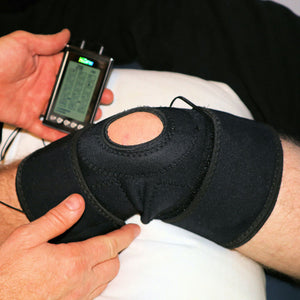Cart
Your cart is empty
Looks like you haven’t added anything yet, browse new arrivals below!
Continue ShoppingSeek Comfort for Your Cerebral Palsy

Medically reviewed by:
Dr. Obianuju Helen Okoye, MD


Cerebral palsy is an umbrella term that encompasses multiple movement disorders. It affects 1 out of 345 children in the U.S. alone.
The word “cerebral” in the name refers to the origin of these disorders being in the brain, while “palsy” describes their nature as muscle problems.
Although CP is lifelong, it is not progressive. The condition can be mild, moderate or severe. It can be managed and improved in many cases through appropriate treatment.
While it is not possible to cure cerebral palsy, you can work with your doctor to come up with an appropriate treatment plan to help you manage your symptoms.

The muscle tightness that can accompany CP can be treated with muscle or nerve injections, or oral muscle relaxants. Doctors may also prescribe injections that help to reduce drooling.

Sometimes as children with cerebral palsy are growing, they experience a shortening of their muscles or tendons that is called “contractures.” A surgeon can restore correct limb and spine placement by lengthening the shortened tissue. Another type of surgery that is sometimes used to treat cerebral palsy is selective dorsal rhizotomy. This is a procedure in which a surgeon cuts certain nerve fibers to help combat painful spasms that are not being helped through more conservative treatments. Numbness can result, however.

The focus of occupational therapy for patients with cerebral palsy is to help restore and maintain independence at home, at school and at work.

Patients with CP may also benefit from physical therapy, which is aimed at restoring and maintaining natural movements. According to a systematic review in Cureus, physical therapy interventions such as resistance exercises, stretching, and cycling can lead to improvements in cardiovascular endurance, coordination, balance and gait.

“Rehabilitation” refers to an umbrella of treatments, including physical therapy, speech therapy, recreational therapy and occupational therapy. It also incorporates the use of braces and assistive devices. A rehabilitation specialist can help you come up with a plan for the most effective combination of treatments.
Exercising with cerebral palsy is safer, easier and more comfortable when you have high-quality footwear that boasts the features you need for a natural gait. Research confirms the benefits of choosing the right footwear for CP.

Choose a shoe that is wide enough to provide stability, and deep enough that you can add inserts for extra cushioning and support.

An upward curvature at the front of a shoe referred to as a “toe spring” can reduce the amount of work muscles need to perform to move the feet while walking. This may make walking more comfortable with CP.

A shoe that fits snugly (but not too tightly) can help to keep the ankles aligned while walking, preventing stumbles and injuries.
A shoe designed by experts who specialize in engineering footwear for patients with cerebral palsy and other health conditions can provide you with superior comfort and support compared to regular footwear.
The Cadense Original Adaptive Shoes for men and women features variable friction technology. This adaptive technology lets you “glide” over uneven surfaces, which can help if you have difficulty lifting your feet due to muscle weakness, spasms, or reduced range of motion.
Being able to walk comfortably and safely encourages more exercise, and promotes independent functioning in day to day life.
No, cerebral palsy is not a progressive condition. It may change in how it presents over the course of a lifetime, but it will not get worse.
A person with cerebral palsy may have difficulties with everyday tasks such as walking, speaking, eating, and controlling other movements.
The same damage to the brain that caused CP might also have caused other neurological issues as well. Patients with CP sometimes also experience hearing and vision changes, changes in sensation, mental health conditions, seizures, or issues affecting the digestive system or bladder.
Except in severe cases, most people with cerebral palsy can be expected to lead full, active lives with the right treatment and support.
A process of developmental monitoring and screening during childhood is used to diagnose cerebral palsy. Children may also undergo medical evaluations.
If doctors suspect CP, they may order further tests to see if they can identify the root cause. Examples include genetic tests, brain imaging tests, and metabolic tests.
A variety of treatment options exist for cerebral palsy, including medications, physical and occupational therapy, speech and language therapy, recreational therapy, and surgical procedures. Treatments may also be required for any co-occurring conditions.
Some types of cerebral palsy cannot be prevented, such as those that stem from genetic factors. But you can prevent certain types of cerebral palsy. For example, using a car seat can help prevent a traumatic brain injury in a growing child, which is one potential cause of CP. There are also safety precautions that can be observed during pregnancy to reduce the chances of CP.
Tips for a safe pregnancy
Mayo Clinic recommends that before becoming pregnant, prospective mothers vaccinate themselves against the infections that can lead to CP. While pregnant, do not use tobacco, alcohol, or other drugs. Take good care of your overall health, and follow your doctor’s recommendations for prenatal care.
If your child has cerebral palsy, the Individuals with Disabilities Education Act provides for special education services. Your doctor can help you navigate these services. You will also want to work closely with your child’s teachers to help ensure your child is receiving the right support in school.
Looks like you haven’t added anything yet, browse new arrivals below!
Continue Shopping